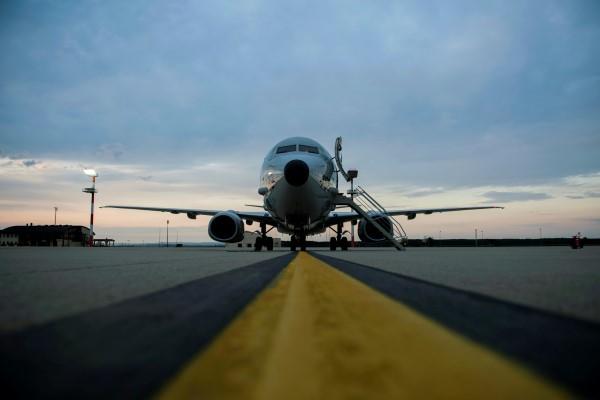Crews aboard the U.S. Navy's new submarine-hunter are getting less tired during missions in part because the Boeing Co.-made plane flies much smoother than its predecessor, a company official said.
Fred Smith, director of global sales and marketing for Boeing's maritime surveillance and engagement business, recently briefed reporters on production and training programs for the P-8 Poseidon, a twin-engine jet based on the company's 737 commercial airliner.
Smith said crew members aboard the new maritime surveillance aircraft are better able to spot targets such as submarines and surface ships than its predecessor, the four-engine turboprop P-3 Orion introduced by Lockheed Martin Corp. in the 1960s, in part because they're less fatigued.
"Recognition differential is much higher on the P-8 because the operators simply have more situational awareness, because of the [newer] equipment and because [crew members] have less fatigue," he said during a briefing with reporters earlier this month at the company's offices in Arlington, Virginia.
"Not only is there more room, but it's just the physical nature of the airplane," he added. "The P-3 has short, stubby wings [that are] very inflexible and every bump out there at 200-300 feet over the water, you feel it -- you feel it vibrate through your body. Those large turboprops out there [provide] constant noise."
Whereas on the P-8, "it's much quieter on the interior of the airplane. The wings are out there absorbing the shock from the buffeting and it's just a smoother ride. It's a much safer ride, frankly. The pilots will tell you, it's much less complicated to operate than a P-3," said Smith, who noted that his own son recently transitioned from flying the Orion to the Poseidon.
While most of the aircraft is similar to its commercial counterpart, the military derivative has 900-ER-size wings that "are significantly structurally different than the commercial wings," he said.
Military.com took a tour of the P-8A last summer at the Paris Air Show during which a naval flight officer said the plane's sensors, radios and sonobuoy launcher and work stations set it apart.
The officer couldn’t offer many details about the unit’s several-month deployment to the Pacific region, but he did highlight the 28 submarine decals painted on the side of the plane, each of which represented a foreign submarine identified and located by the squadron.
The P-8 sensor suite includes an active multi-static and passive acoustic sensor system, an electro-optical/infrared sensor and an inverse synthetic aperture radar.
The Pentagon’s independent testing office in a report released in January concluded that the aircraft's sensor system "provides an early P-8A wide-area, Anti-Submarine Warfare (ASW) search capability similar to P-3C MAC search capability," and noted that the technology "is strongly dependent on the environmental conditions present in the search area and the actions taken by adversaries to avoid detection."
The test report also determined that while the sensor system "provides an effective capability in some environments and scenarios, it fails to deliver the full capability described by the Navy P-8A ASW concept of operations and MAC operational requirement documents."
Company official described the acquisition program as "incremental" and "evolutionary," with upgrades planned over time. For example, the aircraft is slated to receive software improvements, anti-submarine warfare upgrades, network-enabled weapons and additional sensor enhancements by 2021.
Smith said the program is on cost and on schedule and has saved the Navy more than $2 billion since engineering and manufacturing development began in 2004.
The Navy plans to purchase a total of 114 of the twin-engine jets at an estimated cost of $32.4 billion, according to Pentagon budget documents.
As for international customers, Australia and India have announced deals to buy as many as two dozen of the aircraft (they've purchased eight apiece so far) and Britain has signaled it plans to purchase up to nine of the planes as part of a $3.2 billion agreement -- after reportedly expressing an interest in Kawasaki Heavy Industries Ltd.'s P-1 aircraft.
Smith didn't say when British officials plan to officially announce the contract, though they may this summer during the Farnborough air show, scheduled to take place July 11-17 outside London.
"We're standing by," he said.
--Brendan McGarry can be reached at brendan.mcgarry@military.com. Follow him on Twitter at @Brendan_McGarry.




























